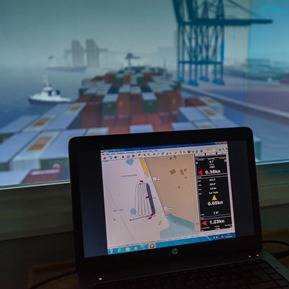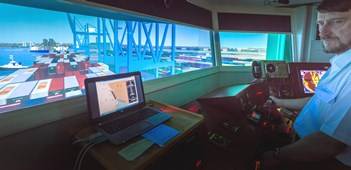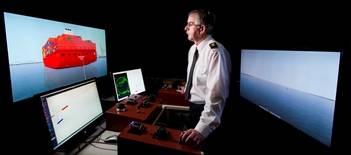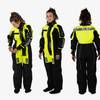The Port of London Authority (PLA) has invested £250,000 to upgrade its ship’s bridge simulator, adding a full tug bridge simulator in a move that is set to enable a boost in port trade and helps terminals verify their expansion plans.
The Thames is the U.K.’s busiest waterway, handling more than 45 million metric tons of cargo a year. For over a decade the bridge simulator has been an essential tool for training the PLA pilots who guide ships to and from their berths on the Thames.
The PLA recently announced plans to recruit 12 new pilots this year to help facilitate increased traffic on the Thames and the simulators will play an integral role in their training.
PLA marine operations director, Peter Steen, said, “This upgrade integrates the latest hydrographic modeling, allowing trainees to learn the characteristics of the Thames from the North Sea right through to central London. It gives pilots the chance to experience all kinds of ships from tankers to container ships, cruise ships to car carriers, before they go on-board and ‘drive’ them for real. It’s rare that you would maneuver large ships without tugs helping, so the addition of the totally interactive tug simulator really takes the experience to another level.”
PLA research completed last year showed that Thames terminals have plans to invest over £1 billion in their operations over the next five years, several looking at handling larger ships.
“Many organizations come to the simulator for research and development purposes, to check their proposed new berth plans and to see how their new ships will handle on the river, sometimes before they’ve even left the shipyard for their maiden voyage,” Steen said. “This enables them to adjust their plans, if need be, and reduce the risk of any unforeseen issues when the vessels actually arrive on the Thames.”
Jason Hornsby, Navigator Terminals U.K. commercial manager, said, “We have frequently utilized the PLA ship’s bridge simulator to help develop future investment projects that would allow an assortment of vessels to visit our Thames terminal.”
Stuart Strutton, Kotug harbour towage U.K. general manager said, “The integration of real hydrographic data and weather modeling into the tug simulator, offers our team very real scenarios to train on.”
In addition to its core role in PLA pilot training, the simulator is also used for coaching pilotage exemption certificate (PEC) holders and specialist training for senior officers from shipping companies, tug masters and pilots from other port authorities.
The PLA simulator team are all Class 1 Unrestricted pilots who bring their everyday knowledge and experience into the training environment. Most training course are attended, in part, by a tug master from one of the tug fleets operating on the river and this is seen as an important addition to the experience and training offered.
Technical Detail
Full mission bridge simulator
- includes full engine controls, bow and stern thrusters, radar, ECDIS, speed logs, a portable pilotage unit and Azimuth Control Device propulsion and steering
- variable parameters based on Thames hydrographic modelling, flood and ebb tide, wind speed and direction, meteorological conditions including fog, rain and snow
- over 70 ship types can be simulated
- record, pause and rewind allowing review and retry of scenarios
- print outs of each exercise for post-exercise discussion and evaluation
- training on traffic management scenarios is available
Tug bridge simulator
- five kinds of tug can be simulated, Voith, ASD, conventional and rotor/tractor
- variable parameters based on Thames hydrographic modeling, tug line management, flood and ebb tide, wind speed and direction, weather like fog, rain and snow
- record, pause and rewind allowing review and retry of scenarios
- view over the tug bow or stern are available

















